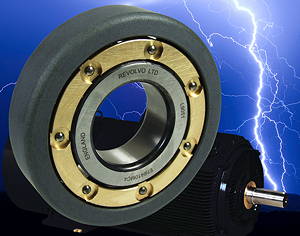The Electro-Safe bearings have been designed to overcome the problem of electrical erosion that occurs when stray electric currents flow to earth through a motor’s bearings. The extent of the damage depends on the size of the current and the duration of the conditions.
The damage usually takes the form of parallel axial marks, known as “fluting”, in the areas of contact between the raceways and the rolling elements. Other damaging effects include craters in the trackways, sometimes accompanied by a dark brown discolouration. These can lead to bearings failing earlier than usual.
“Premature bearing failure caused by stray electrical currents can be extremely frustrating for site operators in certain industries,” says Adrian Menzies, Revolvo’s sales and marketing director. “Often, thinking that it is unavoidable, they will specify low-grade bearings to reduce the cost of frequent replacement, which just exacerbates the original problem of premature failure.”

Revolvo's ceramic-coated bearings protect against the effects of electrical erosion
Revolvo’s solution is to coat the external surfaces of the bearing’s outer ring with aluminium oxide, using a plasma-spraying technique. To enhance the adhesion of the ceramic material to the bearing, a bond coat compound is first applied. The final ceramic coating is at least 0.3mm thick, allowing the bearings to cope with voltages up to 1kV DC.
The coating can withstand press-fitting forces without damage. No dimensional modifications are needed to the bearing housing, because the dimensions and tolerances of the insulated bearing are identical to those of a standard bearing. The insulated bearings can be produced in bore sizes up to 750m and can be used anywhere that electrical current might lead to premature bearing failures.

